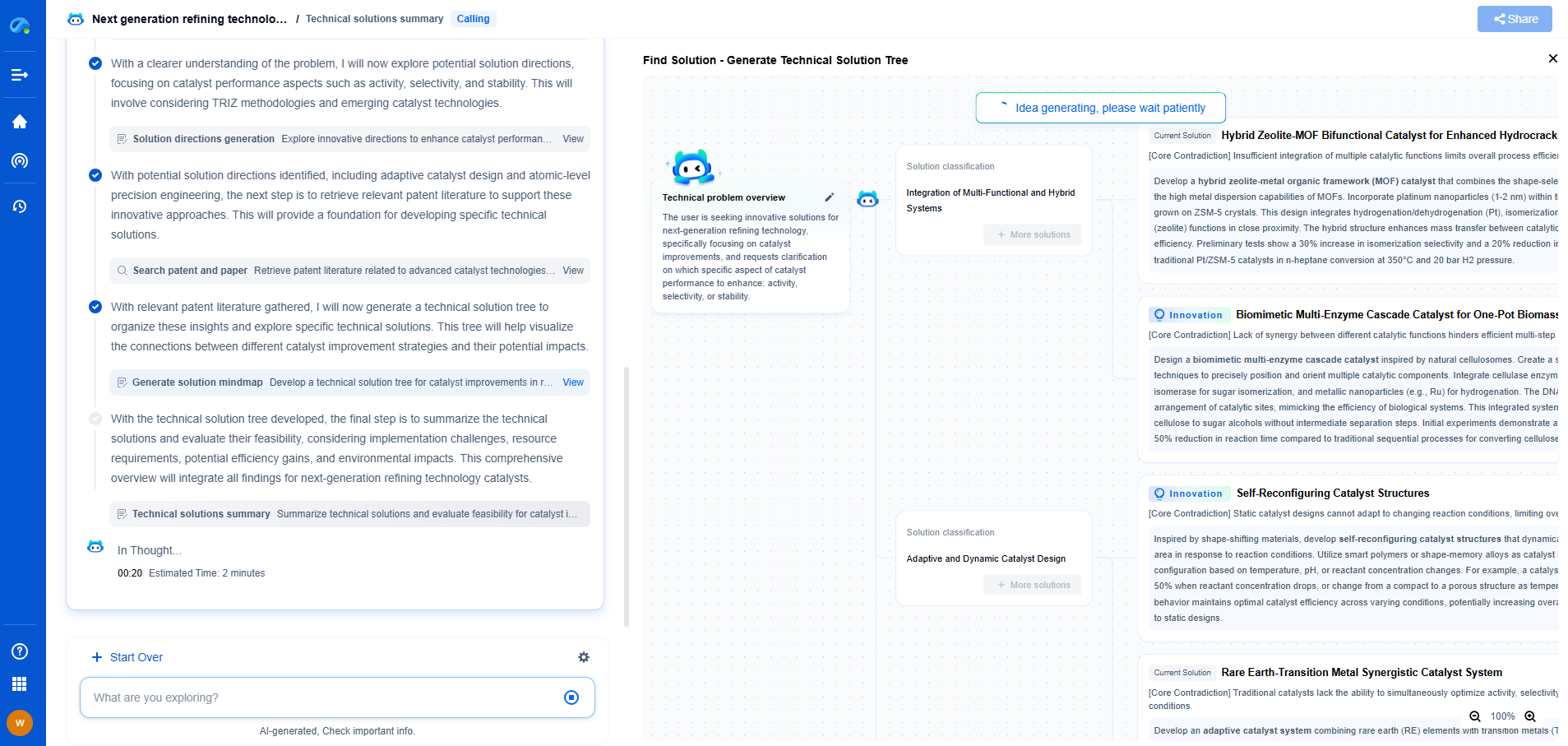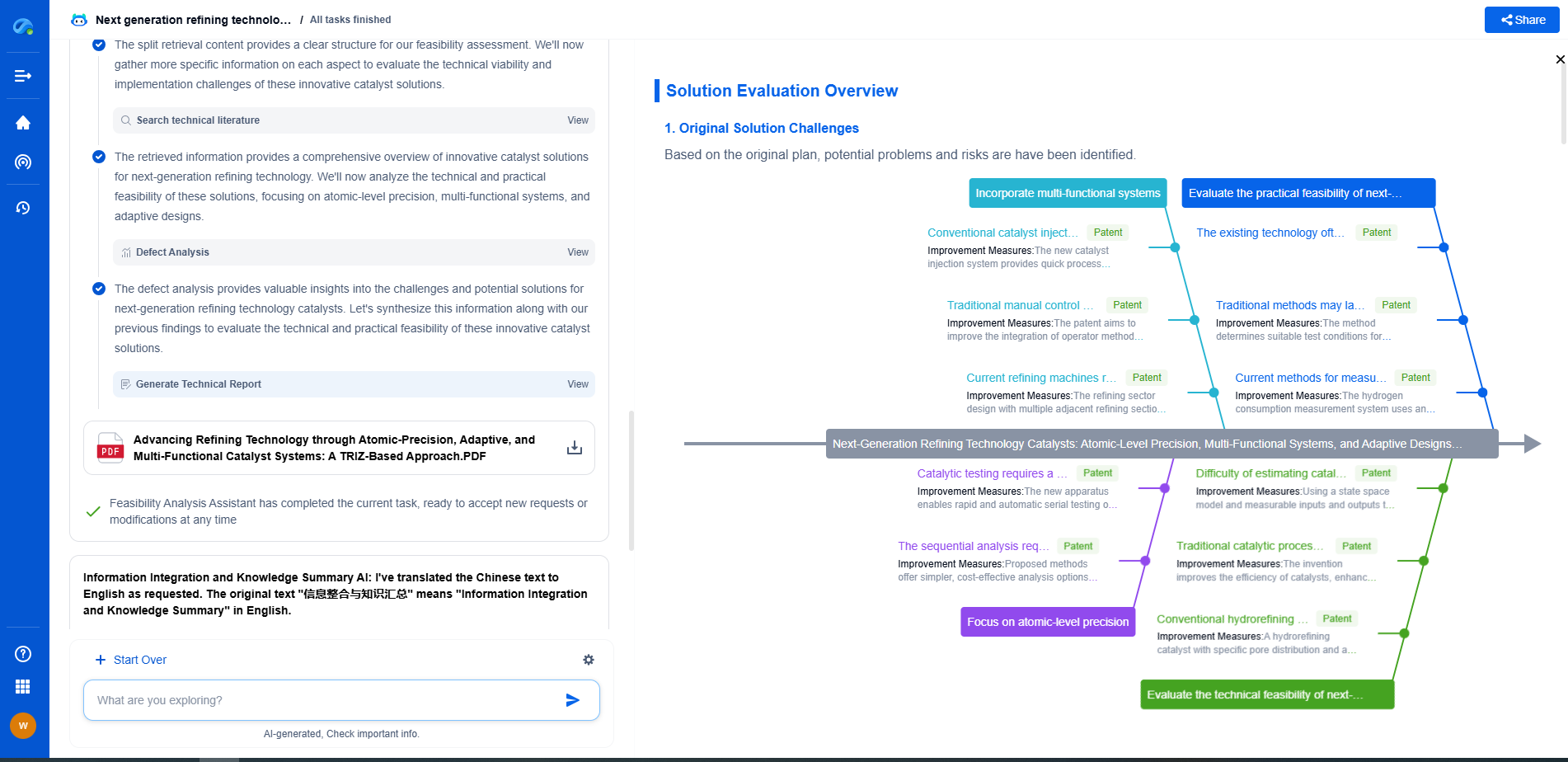Using Kalman Filters for Sensor Fusion in Robotics
JUL 2, 2025 |
Sensor fusion is a critical aspect of modern robotics, enabling robots to perceive their environment more accurately by integrating data from multiple sensors. This process combines complementary information, reduces uncertainty, and improves the robustness of robotic systems. One of the most popular algorithms for sensor fusion is the Kalman filter, a mathematical tool that provides an efficient computational means to estimate the state of a process. In this blog, we will delve into how Kalman filters are applied in the field of robotics for sensor fusion, exploring their principles, benefits, and applications.
Understanding Kalman Filters
Kalman filters were developed by Rudolf E. Kalman in the 1960s and have since become a staple in control systems, navigation, and robotics. The filter operates by predicting the state of a system and then updating its predictions with new measurements. This process is achieved through two main steps: prediction and correction.
1. Prediction Step: In this phase, the filter uses the previous state estimate and a known model of the system to predict the current state. It also estimates the uncertainty associated with this prediction.
2. Correction Step: Once a new measurement is available, the Kalman filter updates the predicted state by comparing it with the actual measurement. It calculates a weighted average of the predicted state and the new measurement, minimizing the error variance.
The output is a refined estimate of the current state, along with an updated measure of the uncertainty of this estimate. This iterative process allows the Kalman filter to continuously adjust and improve its predictions over time.
Advantages of Using Kalman Filters in Robotics
The use of Kalman filters in robotics offers several advantages. Firstly, the filter provides optimal estimates in the presence of noise, which is particularly useful as most sensors in robotics are susceptible to various types of interference. Secondly, Kalman filters are computationally efficient, making them suitable for real-time applications where processing power and time are limited.
Moreover, Kalman filters are highly adaptable and can be extended to accommodate non-linear systems through variations like the Extended Kalman Filter (EKF) and the Unscented Kalman Filter (UKF). These adaptations retain the core benefits of the basic Kalman filter while enabling applicability in a wider range of scenarios.
Applications of Kalman Filters in Robotics
1. Localization: One of the primary applications of Kalman filters in robotics is localization, where the robot determines its position within an environment. Integrating data from GPS, odometry, and inertial sensors, a Kalman filter can provide accurate location estimates even when individual sensor readings are noisy or partially erroneous.
2. Navigation: For successful navigation, robots must dynamically interpret and react to their surroundings. Kalman filters help by fusing sensor data such as LIDAR and vision to map environments and track the robot’s trajectory.
3. Object Tracking: In robotic applications involving interaction with moving objects, Kalman filters are indispensable. They facilitate precise tracking by merging data from multiple sensory inputs, compensating for the latency and errors typical in fast-paced environments.
Implementing Kalman Filters
Implementing a Kalman filter involves defining a system model and measurement model, initializing the state estimates, and iteratively applying the prediction and correction steps. It is essential to have a mathematical understanding of the system dynamics and noise characteristics to tailor the filter appropriately.
For roboticists, numerous libraries and tools are available that simplify the implementation of Kalman filters. These include programming libraries in Python, C++, and MATLAB, which provide predefined functions for various types of Kalman filters and their extensions.
Conclusion
Kalman filters have proven to be a powerful tool in sensor fusion for robotics, offering robust and efficient solutions to some of the most challenging problems in the field. By providing a systematic way to merge noisy and unreliable sensor data, they empower robots to operate with greater accuracy and reliability. As robotics continues to advance, the role of Kalman filters and their derivatives will undoubtedly remain central to the development of intelligent, autonomous systems.
Ready to Reinvent How You Work on Control Systems?
Designing, analyzing, and optimizing control systems involves complex decision-making, from selecting the right sensor configurations to ensuring robust fault tolerance and interoperability. If you’re spending countless hours digging through documentation, standards, patents, or simulation results — it's time for a smarter way to work.
Patsnap Eureka is your intelligent AI Agent, purpose-built for R&D and IP professionals in high-tech industries. Whether you're developing next-gen motion controllers, debugging signal integrity issues, or navigating complex regulatory and patent landscapes in industrial automation, Eureka helps you cut through technical noise and surface the insights that matter—faster.
👉 Experience Patsnap Eureka today — Power up your Control Systems innovation with AI intelligence built for engineers and IP minds.
- R&D
- Intellectual Property
- Life Sciences
- Materials
- Tech Scout
- Unparalleled Data Quality
- Higher Quality Content
- 60% Fewer Hallucinations
Browse by: Latest US Patents, China's latest patents, Technical Efficacy Thesaurus, Application Domain, Technology Topic, Popular Technical Reports.
© 2025 PatSnap. All rights reserved.Legal|Privacy policy|Modern Slavery Act Transparency Statement|Sitemap|About US| Contact US: help@patsnap.com

